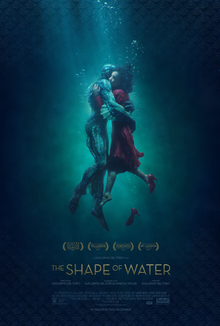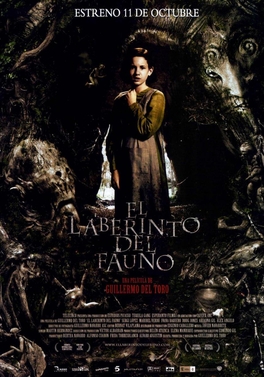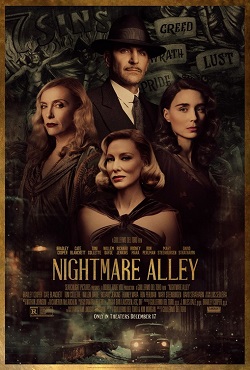
GUILLERMO
ICONIC MOVIES

EVERYTHING INSIDE THE STORY TELLS A STORY THAT ADDS TO A CONSCIOUSNESS
By PETER THOMAS BUSCH
Filmmaker Guillermo del Toro relies on magic realism to compel imaginations through plots that sort the real from the imagined monsters.
This Spanish Latin American genre of storytelling comes to life on screen with the director’s imaginative sets and prop designs, as well as hair and make-up styles influenced by art historicism.
The period settings of thematic discussions, about serious social subject matter, adds to the imaginative qualities of the director’s filmography with time caught in carefully chosen symbols for the camera.
Del Toro’s stylized filmmaking swirls together fantasy and feeling in a manner that accentuates his personal philosophy about reality that is based on a lifetime of experiences and choices.
The director is unabashedly unapologetic about the inspirations for his films, such as childhood experiences, a rejection of Catholicism, past real life trauma, historical authoritarianism, and cinematic icons such as Francis Ford Coppola and Martin Scorsese.

In The Shape of Water (2017) del Toro highlights his lifelong fascination with monsters and notions of purification through engagement with that stylized combination of reality and fantasy.
The camera continually pans through the sets thereby stimulating the imagination to work harder and absorb more details the filmmaker has prepared as bits and pieces of his storytelling power.
This panning camera technique creates kinetic energy that is transferred into the movement of the story, while the extra dimension created also reveals more information.
Elisa, played by Sally Hawkins, is a lonely janitor working at a secret research facility during the Cold War. Elisa is lonely, but she is also content, until she meets the subject of the research facility, a beautiful sea creature.
Characters tend to personify feelings emoted by their own personal engagement with their individualized constructed reality.
Elisa is mute, but her feelings are conveyed through her eyes and how she treats the people around her.
Everything del Toro has created for the story adds a texture to Elisa’s character.
In certain instances, the prop highlights a certain character trait by providing an outward sign of internal intentions. For example, Michael Shannon paces back and forth through the research lab with a cattle prod in his hand. Hellboy has a powerful steel cuff.
In Pan’s Labyrinth (2006), Ivana Baquero has a story book and a carved wooden box for keeping fairies.
Del Toro creates the feeling of a detached young child whose mother has married a fascist military captain, after her father dies. The director then engages the young child with the magic underground kingdom.
Ofelia falls into a land of fantasy and fairies as all the world’s attention seems to fall on her mother who is expecting a child with her new husband, after the family retreats to a military enclave in the Spanish woods during 1944.
The detached young child escapes into a hidden construct of fairies and giant insects as the authoritarian reality suffers losses while repelling a rebellion.
The film’s protagonist meets a gatekeeper to the underworld who gives Ofelia three tests to complete before she can live in eternity as a Princess.
The underworld offers passages of escape, but the naïve Ofelia must also follow rules at a time when she is too young to fully understand the consequences of not following them.
The director has rejected Catholicism, but he nevertheless finds authoritarianism replicated elsewhere, such as in the military enclave and in the gothic underworld.
Monsters are everywhere, but appearances might be deceiving. Even in Pinocchio (2021) the whale that is meant to swallow Geppetto is more of a mechanical sea monster eventually blown apart by authoritarian military excess.
Doug Jones is regularly cast as the character shaped like a monster, but he is more often revealed to be a victim of the real human monsters that appear elsewhere in the story.
Ron Perlman is also regularly cast by del Toro, this time as Hellboy, and next time as Bruno, the carnival strongman, and then maybe as Podesta, the right-hand man to Fascist dictator Benito Mussolini.
In Hellboy II: The Golden Army (2008), del Toro has monsters with machines chasing worse monsters modified by machines and carrying insect bombs.
The storyboards weave beauty into the grotesque – while the camera follows the narrative in a type of cathartic purge of how the world has been created imperfectly, including the not so happy end results.
In Nightmare Alley (2021) the monsters are part of a carnival that live lives separate from the real world of their visitors. Del Toro shows though how humanity is filled of many sorts of monsters when characters leave the carnival to put on a psychic medium show across America for the ultra-rich. The grifter who joins the carnival may be a more sinister monster than the freaks on display as public curiosities.
Bradley Cooper and Rooney Mara costar in an ensemble cast, that includes Willem Dafoe, and Cate Blanchett as Dr. Lilith Ritter.
Stanton, played by Cooper, is introduced by the director in the opening scenes as a kind of monster dragging off a dead body into a pit underneath the family home that is subsequently set on fire. Everything begins with family connections and how childhood experiences affect how characters react to reality.
Themes of family and childhood betrayals permeate several films like a thin sticky membrane that multiplies as characters and subject matters mutate along the linear narrative.
Like many filmmakers, del Toro’s fascination with cinema began as a young boy learning to master their family’s home movie camera and stop motion animation with the toys already in-hand.
Then as now, del Toro’s filmmaking was only limited by the availability of financing. The $2500 home movie budget is now a multi-million dollar global cinematic endeavour.
Instead of an immersion in emotion, del Toro creates a more personalized texturing of emotive devices, mixing Freudian analyses with magic infused cultural tropes, in part as a reach to his Mexican cultural background and rejections of ritualistic church and state institutions.
Reality is performed from the perspective of a child or an innocent child-like character detached from the more complicated authoritarian machinations of church and state who view the world from a more myopic point of view.
Wouldn’t life be easier if everyone could just escape again into childhood esprit?
This realistic perspective of individuals not in charge of the other worldly engineering appeals to the audiences’ inner child – flashing the audience back to that fragile time when you picked up your parents’ Super 8 camera and made the action figurines in your bedroom come to life in a much bigger world, one stop motion step at a time.
